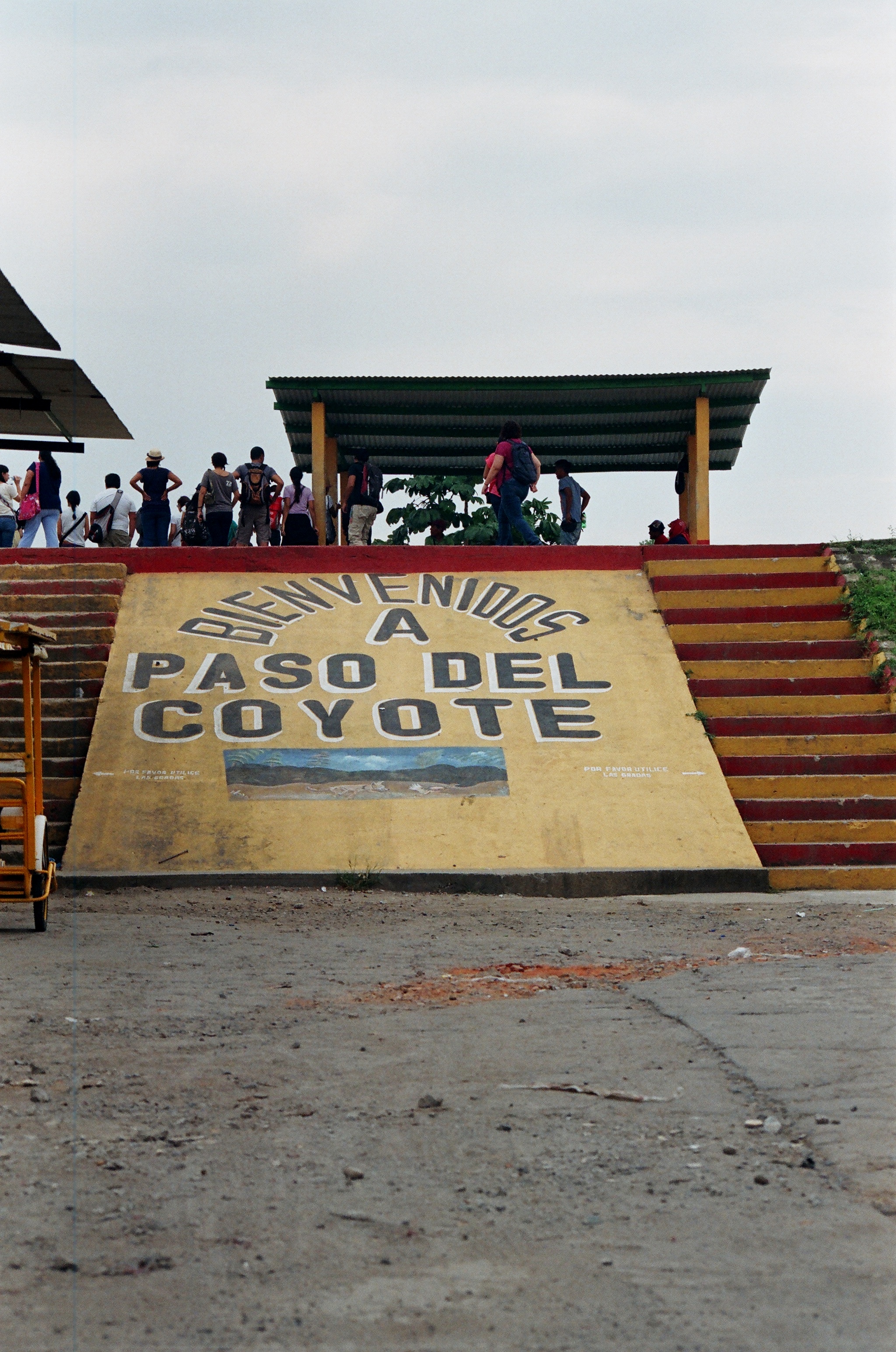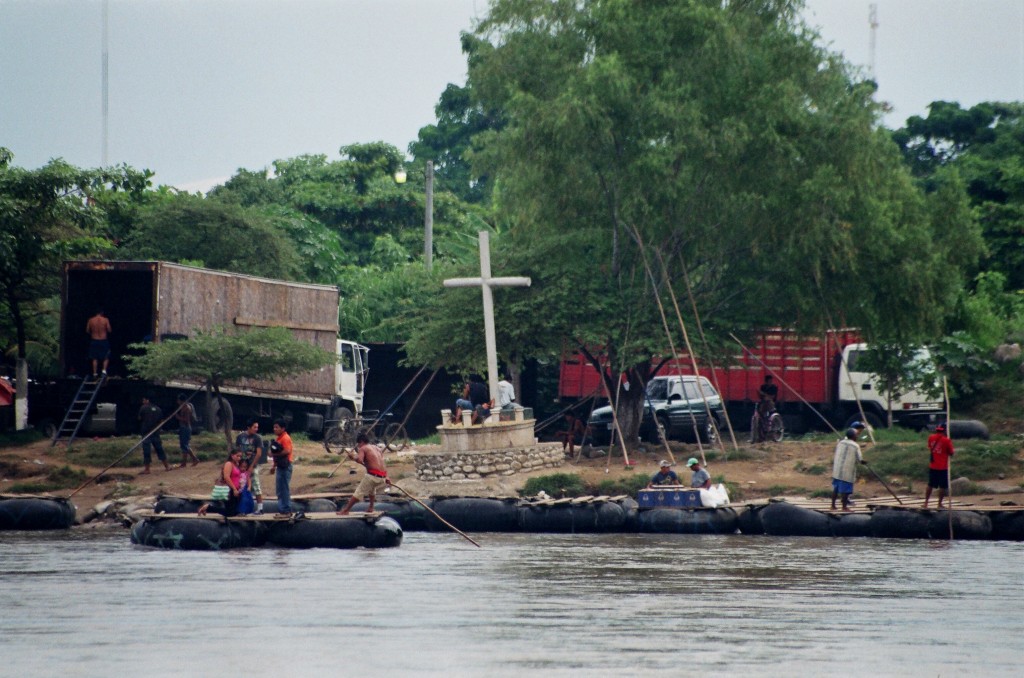By Ramona Calin
Endlessly preoccupied with its northern border with the United States, Mexico has forgotten its southern border. Most distressing about Mexico’s southern border with Guatemala are the many thousands of unaccompanied children who pass through on their way to the US. Mexico’s northern border has spurred a generous anthology of research from social scientists and visual artists alike. It remains invisible, however, that migration practices are being transferred from the northern border to the southern one. This transfer carries all the institutional practices of the North as well as the social stereotypization of migrants. Along Mexico´s southern border there are no walls covered in activist graffiti or political messages. Artists or ethnographers do not travel here. The border with Guatemala south of Tapachula can only claim to be home to Latin America´s largest migratory unit, which holds up to 1000 people. A migratory unit is a sort of detention centre where illegal migrants are being held as their status is resolved. Most stays terminate with deportation, while a few receive asylum and are thus legal to remain in Mexico. A substantial proportion of migrants go through the migration-deportation cycle several times. While Mexico condemns the US’ treatment of its own citizens along its northern border with the United States, it is now employing the same tactics to control its southern frontier.
The phenomenon
It costs less than $3 to cross the river-border at Ciudad Hidalgo (Mexico) – Tecun Unan (Guatemala). Given the short distance, lack of control and numerous boats to ferry passengers across the river, it is the easiest point to make the crossing. The Centre Fray Matias works with migrants in Tapachula and reported 9893 minors entered Mexico in 2013, the vast majority via this route. Most of them aim to continue their journey to the USA on ‘La Bestia´ (the beast), a cargo train which travels across Mexico, terminating close to the northern border of the United States. Unlike other routes which pass through forests, and dangerous in themselves, the myriad challenges awaiting prospective migrants do not lie at the frontier itself but what follows afterwards. The road from Tapachula, the largest city on the frontier, to other cities or even the capital, is packed with controls from the National Institute of Migration, police and military. Within an hours’ ride, luggage and documents will be checked multiple times. Police officers with video cameras will enter the bus and tape every person individually for the record. There is also a technologically advanced customs control centre located around 100 kilometres from the border. Passing through this center one does not feel as though in Mexico anymore. Mobile scanners move full circle around all vehicles. With financial support from the US through ´Plan Merida´, Mexico has succeeded in militarizing its border. A significant amount of resources is also used in producing materials to deter migration, such as videos and songs, emphasizing the dangers of travelling alone. Migrants can opt to travel via side routes but that increases their vulnerability – being caught in areas of little visibility means policemen are more daring in abusing their rights.
Response
Of the 9893 minors who entered Mexico, only 50 received refugee status while 8 350 were deported and a further 1493 remain with family in the country. Most assistance for these children is provided by civil society organisation who condemn the ´service´ offered by authorities such as the National Institute of Migration or the DIF (Department for Family Planning). Indeed, migration services act as a deportation network and are far from transparent. Recently civil society organisation have been prohibited from entering the migratory units where migrants are detained. They cannot continue to assist minors to exercise their rights. Civil society workers have reported that staff in migratory units bully the children, so they do not ask for asylum, telling them if they do, they will remain indefinitely in the same facility. While technically this is true, most appeals for refugee are refused and contesting the decision puts the person in a judicial limbo where he can wait indefinitely in the same facility until the result is known.
Some civil society centres further north in Mexico serve as an oasis on the migratory trip. Coyotes, people who assist migrants on their journey and across the border, often leave children there to eat and wash, picking them up after several days to continue their journey. Many coyotes are paid by relatives of the child. Workers in these civil society centres try to verify the child´s story and trajectory and if they can reach a relative to prove this story then they let the child continue with their journey, accompanied by the coyote. However, as more money is being demanded by the coyotes, fewer and fewer people make it this far north because the route is also more dangerous.
The migration cycle
Many people go through this process multiple times as deportation means they will return to the state of vulnerability they were in when they decided to migrate. In Guatemala they are under the supervision of authorities for 72 hours. If no identified adult comes for them, they are institutionalized or released back onto the streets. There are some centres, such as Casa Alianza, which works in various countries, which aim to assist their reintegration into society but most lack the resources to follow up on this process. Humanitarian assistance provided by the Red Cross has been stated to provide limited support, such as a meal and maybe sanitary pads for women but not real long-term support. Returning home, migrants have to address issues such as the debt they acquired while trying to gather funds for their trip or the violence they sought to escape in the first place. Of the ones which are deported, many repeat the journey, again and again, with some ending up in the migratory units as many as 5 times. Migration becomes a process that defines their childhood and adolescence.
Having exited through all ages, civilizations and cultures, migration has taken various forms.The migration of unaccompanied minors through Mexico is a symptom of worsening living conditions in Central America and a widening wage gap between the Southern and the Northern parts of the American continent. Though an alarming phenomenon, Mexico’s Southern border has remained somewhat invisible in spite of practising even worse controls and checks than those witnessed at Mexico’s Northern border with the USA . Institutions meant to protect the vulnerable work to divide families and are hostile towards children, washing away their responsibilities by opting for the immediate yet ineffective measure of deportation.
What is paradoxical about migration in the 21st century is that freedom of movement for citizens has become more of a criminal act at a time when freedom of goods, capital and services are deemed necessary for development. It is in this context that protection services have not followed the path of globalization. There are no real social protection mechanisms that operate transnationally and they have to be created out of the will of people mostly working in civil society. Networks are growing from scratch following financial incentives and funding opportunities along with individual and institutional will. Social protection mechanisms remain fragmented and vary according to circumstances and operational capacity. What has prevailed are mechanisms of control of people, borders and a differentiation of transnational migratory classes which are common in various conflict areas globally.
Featured Image Credit: Ramona Calin

